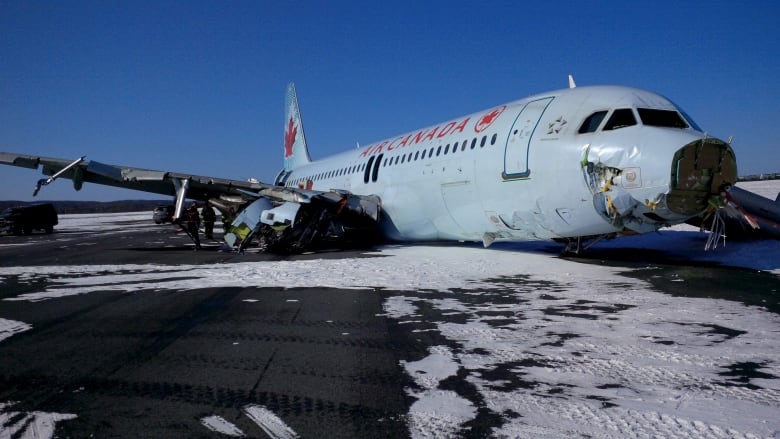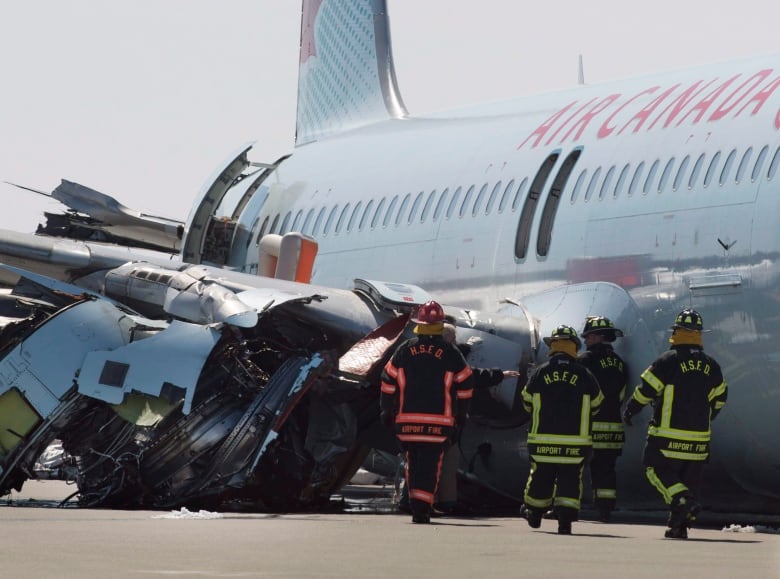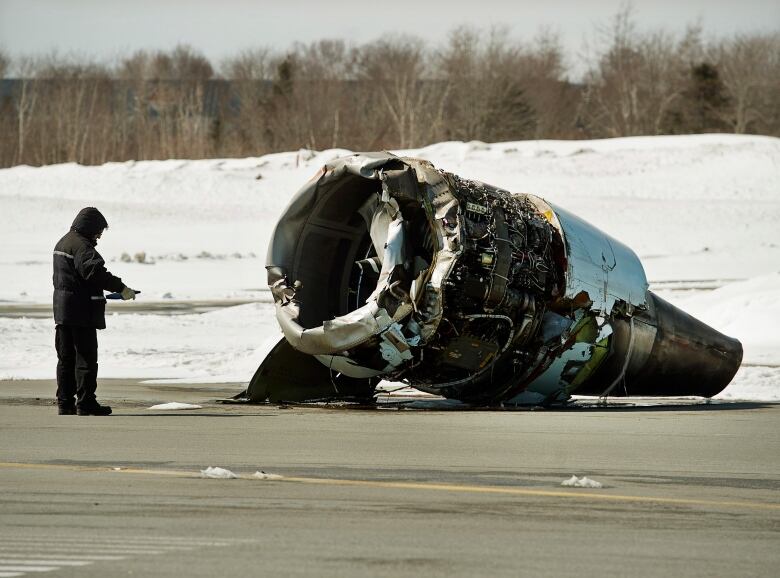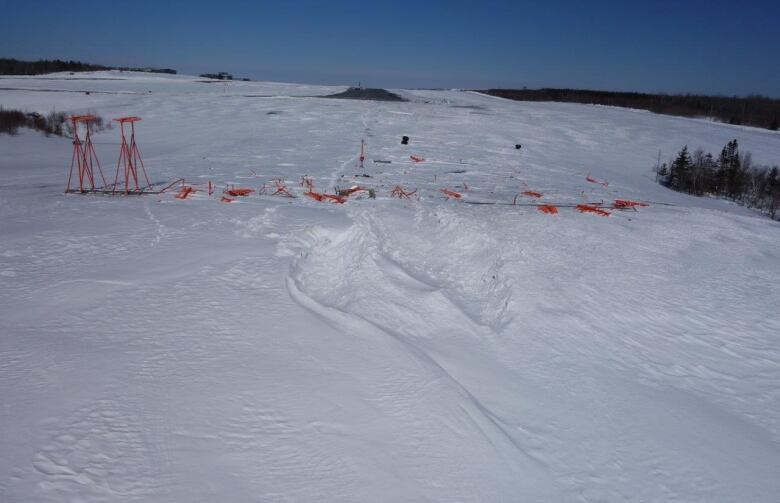2015 Air Canada crash in Halifax blamed on approach procedure, visibility, lighting
More than 2 dozen people were injured, plane's landing gear and engine ripped off in crash

The Transportation Safety Board has found that approach procedures, poor visibility and reduced airfield lighting led to the March 29, 2015, plane crash at Halifax Stanfield International Airport that injured more than two dozen people.
The pilots had set the correct angle of descent as stipulated by Air Canada butdid not notice thathigh winds during the blizzard that night had pushed the plane off its flight path,according to the report released Thursday morning.
At the time of the crash, standard descent procedure did not require pilotsto monitor an aircraft's altitude and distance to the runway a process that has since been changed.
"It was only in the last few seconds of the flight, after the pilots disengaged theautopilotto land manually, that they then realizedthat the aircraft was too low and too far back," the report says.
What happened that night
Just after midnight on March29, 2015,Air Canada Flight 624 from Toronto approached the Halifax airport in gusty winds and heavy snowfall.
The twin engine Airbus 320 carrying 133 passengers and five crew members then hit some power lines and slammed into the ground 200 metres short of Runway 05. The jet then bounced into the air, where it tore through a navigation antenna.
The plane hit the ground a second time, about 70 metres before the runway threshold. One of its engines and its landing gear were torn off as it skidded along the runway amid a shower of sparks for another 570 metres, according to the Transportation Safety Board.
The TSB said the plane was so heavily damaged in the crash it was "destroyed".
In its report, investigators say the flight crew had set the autopilottofly the "appropriate constant descent flight path angle." Because the procedure did not require the crew to monitor the plane's altitude and distance from the runway, they didn't notice changes in the wind that caused the jet to move farther back from the expected flight path.
In addition, investigators found the runway lights were not turned to their maximum setting, despite the flight crew's request to do so. The report also said the tower controller was "preoccupied" with snow plows on the runway and the nearby aircraft on the taxiway.
As the plane approached the runway, the report said the flight crew saw some lights at the airport that they expected to become more visible as they got closer to the airport.
25 passengers treated in hospital

Twenty-five passengers went to hospital with non life-threatening injuries.
The TSB said that during the crash landing, the captain's head struck the glare shield a hood above the instrument panel designed to keep glare from obscuring vision and that the first officer suffered serious damage to his right eye when he also struck the glare shield. In both cases, their shoulder harnesses never locked in.
It noted a flight attendant was injured by a coffee maker that came free of its base because its locking system wasn't correctly engaged.
"Because no emergency was expected, the passengers and cabin crew were not in a brace position at the time of the initial impact," the report said. "Most of the injuries sustained by the passengers were consistent with not adopting a brace position."
Safety changes made
Since the the crash, Air Canada has provided its pilots with more specific recommendations on "required visual references for landing approaches,"has made "explicit warnings" on the limitations of the autopilot and vertical navigation and now requires the pilots to monitor instruments during all approaches "when below the minimum descent altitude."
Halifax airport upgraded the approach lighting for the runway where the crash occurred, and Air Canada has also recommended the same be done for other approaches at Canadian airports.

Halifax airport has also since reviewed its emergency response plan and made adjustments to its emergency assets, including access to backup power.
Nav Canada, the corporation that owns and operates Canada's civil air navigation service, published a satellite-based approach on Runway 05 that provides lateral and vertical guidancefor aircraft.
In its report, the TSB said the investigation highlighted several risk factors when it comes to passenger safety. Kathy Fox, TSB chair, said during evacuation of the plane,some passengers exited with their luggage, creating delays.
"It is important that passengers pay attention to the pre-flight safety briefings, review the safety features card and wear clothing that is appropriate to the season," the report said.

Class action lawsuit filed
Lawyer Ray Wagner filed a class action lawsuit on behalf of the plaintiffs in the spring of 2015. It was later certified.
More than two dozen people were injured in the crash, and virtually all of the 133 passengers had to spend about 50 minutes on the tarmac, huddled against a blizzard, before they were taken to an unheated hangar, the lawsuit alleges.
None of the allegations in the class action has been tested in court.
Wagner said Thursday more than half of the passengers sustained physical or mental health injuries or both in the crash, and he's continuing to hear from them.
The lawyer said the Transportation Safety Board's findingswhich point to several groups playing a role in the crashprovide ammunition for the lawsuit, which names several defendants.
With files from The Canadian Press












_(720p).jpg)


 OFFICIAL HD MUSIC VIDEO.jpg)
.jpg)



























































































